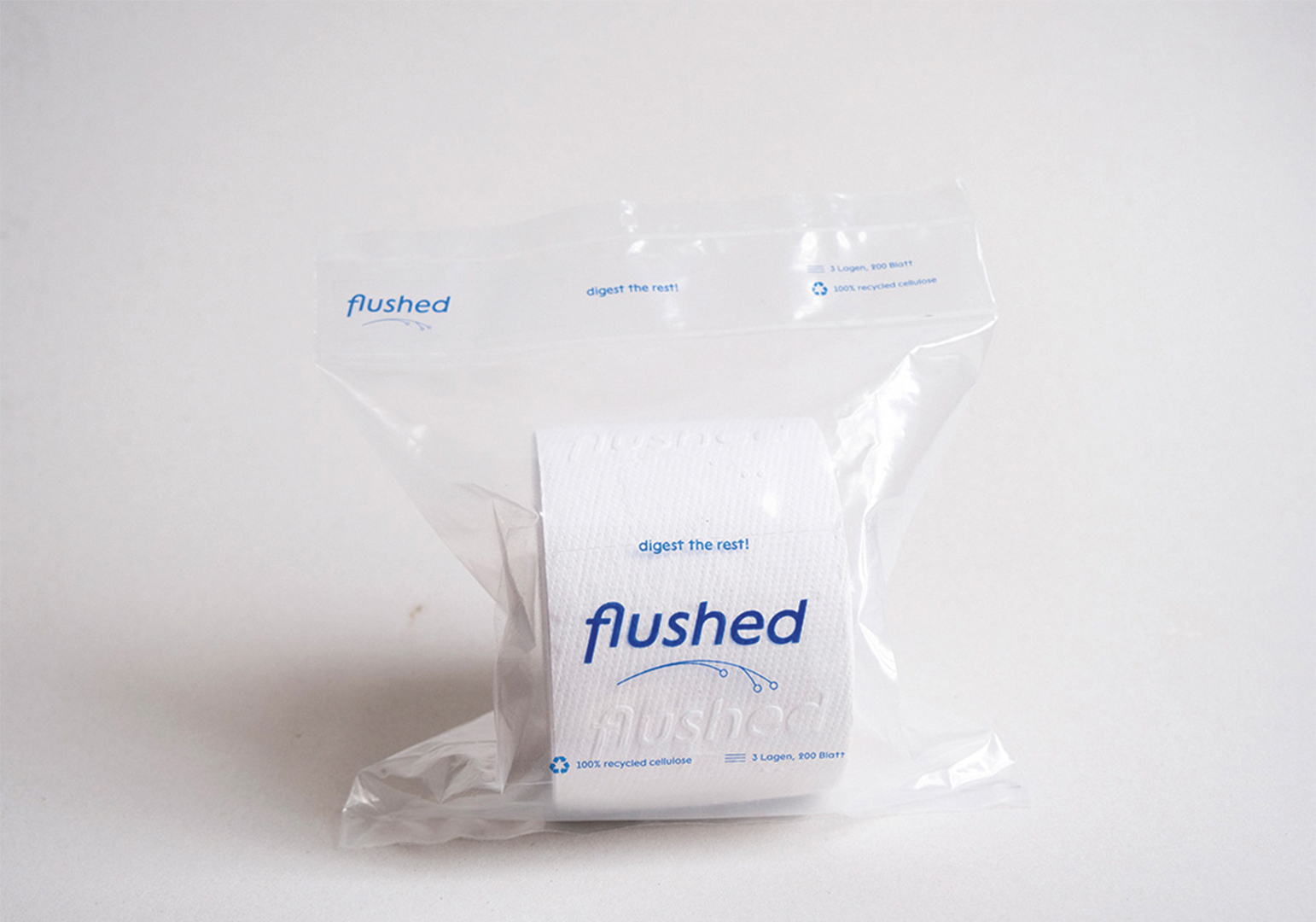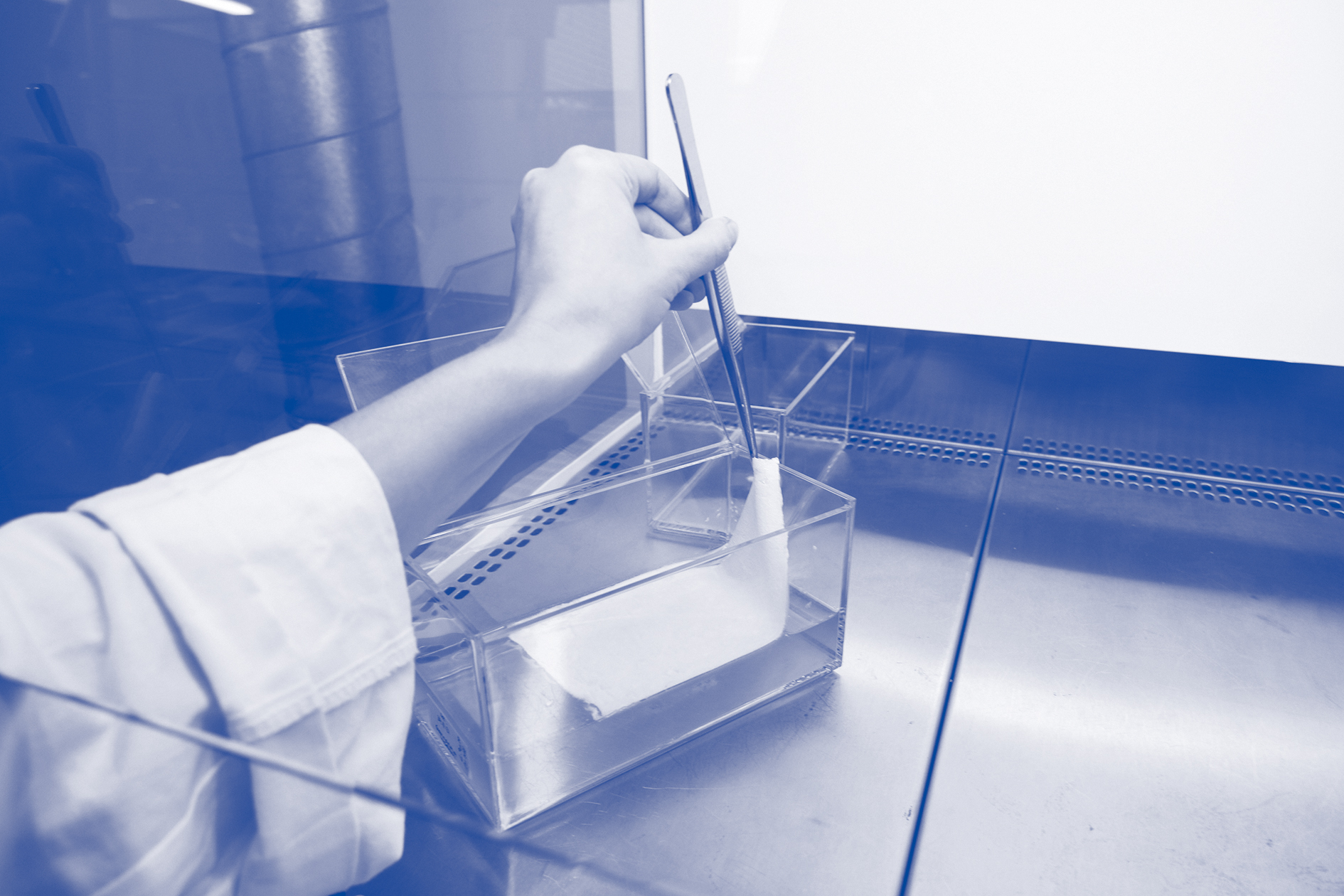How can we effectively integrate living organisms into our daily lives and consciously leverage their properties? The toilet paper FLUSHED contains a mycelial component that is specifically reactivated during the flushing process. The hyphal network within the mycelium has the unique ability to metabolize pollutants dissolved in the water as it traverses through the sewage system. Given the substantial influx of pharmaceuticals, their degradation products, and other micropollutants into wastewater each day, the concentration of heavy metals, hormones, and antibiotics in groundwater is on the rise, significantly impacting our environment. To address this issue, I conducted material experiments and explored four potential strategies to integrate mycelium into industrial toilet paper production. The goal is to contribute to a more sustainable and environmentally conscious approach in our daily routines.





